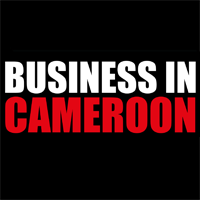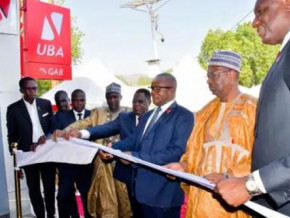
Economic performances of varying scales for countries in the franc zone
The latest meeting of the Finance Ministers of the franc zone, which was held on 9 April 2016 in Yaoundé, in Cameroon, one again gave an idea of the varying scales of development of the economies making up this monetary area. According to the report of experts who met on the eve of the Ministers' meeting, the current bleak economic environment is not impacting in the same way the eight UEMOA countries (Mali, Burkina Faso, Guinea Bissau, Côte d'Ivoire, Benin, Togo and Niger) and the six CEMAC countries (Cameroon, Gabon, Congo, Chad, Equatorial Guinea and CAR), even though the two communities are using the same currency: Franc Cfa.
For example, while the economic growth in the UEMOA peaked at 6.5% in 2015 and is even announced at slightly over 7% in 2016, in the CEMAC area, it has been plummeting since last year. From 4.8% in 2014, the economic growth in the CEMAC peaked at 2.8% in 2015, a drop of 2%. In 2016, according to official forecast, it is projected at 2%, thus 5% less than forecast in the UEMOA.
At the origin of this gap, the experts of the franc zone explained, is first the level of integration within the two communities. In the UEMOA zone, the free movement of people and goods in force for years now promotes the development of intra-community trade exchanges, propelling them to 10% in 2014. At the same time, the six CEMAC countries post a volume of intra-community trade of 3% of the GDP, because it is impossible for the nationals of this community to travel without a visa in most cases, despite a political discourse exaggerating a sub-regional integration which seems to have morphed into a recurrent issue.
Secondly, the experts of the franc zone also reasoned, the gap in economic performances observed between the UEMOA and CEMAC countries is closely related to the level of diversification of the economies of the States in the two communities. From this point of view, in the CEMAC, where only Cameroon can claim a relative diversification of its economic fabric, the economies of the members States are very much dependent on the oil production, with five out of the six countries being oil producers. In Equatorial Guinea for example, the oil revenues represent up to 85% of the national budget.
Concurrently, in the UEMOA, where geographical and climate conditions are not always the best, the authorities have managed to implement ambitious investment programs in the agricultural sector. According to the franc zone experts, this sector is among the main drivers of economic growth in the UEMOA, beside infrastructure, real estate, trade and telecommunications. Various sectors in which the CEMAC countries have more advantages though, compared to the UEMOA.
BRM
BEAC releases FCfa 600 billion for banks by dropping the level of minimum reserves by 50%
In order to bring more liquidity to the coffers of the banks of the CEMAC member countries – Cameroon, Congo, Gabon, Equatorial Guinea, Chad and the Central African Republic – the central bank decided to drop by 50% the levels of the minimum reserves applicable to banks. This decision was taken during an extraordinary meeting of the Central African Bank Monetary Policy Committee held on 6 April 2016 in Yaoundé, the Cameroonian capital.
According the Lucas Abaga Nchama (photo), Governor of BEAC, this decision taken following an observation on the “decrease in bank deposits” in the CEMAC area, will help release between FCfa 500 and 600 billion for the banks established in the CEMAC area. This money, the BEAC governor hopes, will help boost the economy’s financing in this community, in an environment of generalised drop in export revenues.
“We changed the prime rate a lot in recent times. Then, we increased the upper limit for refinancing with the central bank. Today, we are dropping the level of minimum reserves applicable to the banks in the sub-region. This demonstrates that the central bank did not passive against the situation which is impacting on our economies”, Lucas Abaga Nchama explained.
BRM
Lire aussi
Cameroon will raise FCfa 62 to 72 billion on the BEAC market during the 2nd quarter 2016
As part of its public bonds issuance operations on the market of the Central African States Bank (BEAC), the Cameroonian Treasury will try to raise between FCfa 62 and 72 billion during the second quarter 2016, according to the provisional timetable sent by the Ministry of Finance to central bank of the six countries of the CEMAC zone.
These Cameroonian bond issuances are divided into six issuances of Treasury bills (in French, BTA – Bons du Trésor Assimilables) of FCfa 7 billion each, thus in total FCfa 42 billion; and two Treasury bonds (in French, OTA – Obligations du Trésor Assimiliables) with a maturity of 2 and 3 years, of between FCfa 10 and 15 billion each.
The first operation by the Cameroonian State on this market during the second quarter 2016 took place on 31 March, with the first OTA issuance with a 2-year maturity. The second OTA issuance, with a 3-year maturity this time, is scheduled for 1 June 2016. The first two BTA operations will respectively take place on 13 and 27 April.
BRM
Record profit for the Bank of Central African States in 2015, with FCfa 160.7 billion
The final accounts of the Bank of Central African States (BEAC) for the year 2015 post a profit of FCfa 160.7 billion, we learned at the end of a meeting of the Ministerial Committee of the Central African Monetary Union (UMAC), which took place on 25 March 2016 in Yaoundé, the Cameroonian capital.
In addition to multiplying by six the profit of FCfa 25.1 billion raked in by BEAC at end 2014, the "exceptional" profit made in 2015 by the issuing bank of the six member-States of the CEMAC area is a record, specified Célestin Yanindji, Minister of Finance and Budget of CAR and current President of the UMAC ministerial committee. He moreover congratulated the Governor of the BEAC, Lucas Abaga Nchama, and his team, for achieving this unprecedented level of performance since the creation of BEAC in 1972.
According to the BEAC Governor, "this is the result of the foreign exchange reserves management strategy implemented in 2010". The resources thus taken in, stressed Lucas Abaga Nchama, "will enable us to strengthen our reserves in order to cope with the drop in the currency coverage rate, to further finance the Cemac savings and share dividends to our States".
As a reminder, starting from 2010, BEAC had to strengthen the management mechanism for its reserves, following a failed investment made in 2008 with Société Générale. This investment then described as risky led the central bank of CEMAC States to lose FCfa 16.4 billion. Consequence: BEAC ended the year 2009 with a net loss of FCfa 29.5 billion, against a net profit of FCfa 45.2 billion a year before, thus a variance of 165.4%
BRM
CFAO group announces investments in large-scale distribution in Cameroon
CFAO group has just announced that it would soon invest USD 500 million ( about FCfa 275 billion) for the construction of 20 malls in Central and Western Africa. Countries concerned by these investments are, we learned, Cameroon, Gabon, DRC, Senegal, Nigeria, Ghana and Côte d'Ivoire.
In Cameroon, our source revealed, CFAO group, to which the Carrefour brand -leader on the large-scale distribution market in France- is now associated, has already identified 5 sites on which the shopping centres could be built.
In addition to contribute to the promotion of some local products, this positioning by CFAO in mass distribution in Cameroon will open the doors of the first economy of the Cemac area for its partner Carrefour.
On this market, the CFAO-Carrefour will find other French brands such as Casino, with a decades-long presence in the country, or Super-U, who opened its first shopping centre in the Cameroonian capital in June 2015.
BRM
According to BEAC, the growth in the CEMAC area fell by 2% in 2015 and will drop back to 2% in 2016
As was expected, economic growth was not in the cards for the Cemac area in 2015. According to the Monetary Policy Committee (CPM in French) of the Central African States Bank (BEAC), which held its first session of the year 2016 on 21 March in Yaoundé, the growth rate in this community of six countries (Cameroon, Gabon, Congo, Chad, Equatorial Guinea and CAR) peaked at 2.8% last year, against 4.8% in 2014, thus a decrease of 2%.
At the roots of this under-performance, the Governor of BEAC stressed at the end of the CPM meeting of 21 March in the Cameroonian capital, mainly is the drop in international prices for oil, a commodity which five of the six CEMAC countries export; and the insecurity at the borders of some countries, particularly Chad and Cameroon, with the crimes of the Nigerian Islamist sect Boko Haram.
CPM forecasts that this difficult situation will persevere throughout 2016, leading to a new drop-down to 2% in the economic growth rate in CEMAC, 0.8% lower compared to 2015. But to get there, the governor of BEAC, Lucas Abaga Nchama, advises the States of the community to improve public spending, particularly investments expenditure; and to improve the business climate, in order to attract foreign investors.
However, in 2016, inflationary pressures in this community will stabilise ar 2.7% (against 2.3% in 2015), which is under the 3% level allowed within Cemac. Also no worries for the foreign exchange reserves which, despite the drop in export revenues, will remain "confortable" throughout 2016, the governor of BEAC specified.
BRM
Louis Paul Motazé: “If we want to boost our resilience, we must produce more and in quality, and also, make an effort of transformation”
Cameroon’s Minister of Economy gives here the reasons why his country resists more than other CEMAC member states to the actual oil crisis; talks about EPAs, the promotion of private investment; and discusses various means through which Cameroon is to achieve actual industrialization.
In his end-of-year speech, Cameroon’s President once again stigmatized administrative delays, which are among breaks to Cameroon’s economic development. Why do you think it is so difficult to overcome these delays, which among other things, slow down the country’s industrialization?
Let me tell you this little, surprising, anecdote. It was in March last year; I was at a Forum in Geneva with Ministers of Economy. There I met Bulgaria’s Prime Minister, who if I recall came to make a presentation on the Doing Business. Among other things, he discussed the various efforts his country made to get 40 points in this ranking. We went over the various decisions that Bulgaria then took and during the process, we realized that we, Cameroon, had walked the same steps back in 1990.
In 1990, our President took futuristic decisions, namely the freedom laws, including freedom to do business, entrepreneurial freedom. For example, when an economic operator requested an authorization, instead of waiting indefinitely to get it, the administration was the one to take the decision under a given deadline. Passed this deadline, the agreement was tacit. But what did the administration do? It did not respect the new amendments, under the pretext that they were a threat to its authority.
So, we really do have a heavy administration, but this is not without advantages. For example, it allows the respect of protocol. You know, when there is no protocol, anarchy quickly settles in. However, with long and arduous protocols, a certain number of issues can arise.
In 2013, a law promoting private investment in Cameroon was voted by the National Assembly. Looking back today, we notice that those who supposedly benefit from the law have not been able to implement any of their projects so far…
Do you know this law is criticized? During her recent visit to Cameroon, Mrs. Lagarde, IMF’s Director General, said there was more to do! It’s been long since Cameroon’s government understood that it should implement a number of policies that attract investors to Cameroon, and this is why it drafted the 2013 law. However, there is a school of thought according to which the law gave too many advantages to investors. And that is exactly what is criticized in the 2013 law!
Anyhow, Cameroon’s government is putting a lot of efforts into attracting investments. And thank God, it is now bearing fruits considering the various conventions which have been signed in the framework of the law. Companies are settling in and gaining from this is what matters now.
As for the law, we thought it would be best that instead of collecting revenues from the start -customs taxation- to let the business be properly established and collect the revenues afterward. It is a model which has worked in countries like Dubai and Mauritius.
The other model consists in, given the actual global market hit by tumbling prices of commodities (oil included), mobilizing non-oil revenues, these include taxes and duties. A few people also defend this model, IMF’s Director General being one of them given that she defended it during her last visit to Cameroon.
Both models have advantages and disadvantages. The most important still is that Cameroon needs to attract investors. Now, maybe it is necessary to improve the targeting of the law’s beneficiaries, because what is troubling with having a general policy is that anybody can benefit from it, and this includes those that might not necessarily need it.
You always seem so optimistic regarding EPAs between Cameron and European Union. What is the upside of these agreements while Cameroon is about to open 80% of its borders to products that come from much more industrialized countries?
You know, we must always look at the bright side in life. Instead of crying or complaining, the best should be to ask what we can gain from EPAs. We have said on countless occasions that the 80% you are talking about are progressive. There is a dismantling schedule. And I believe the first stage of this dismantling involves products which are important to us, knowingly, equipment which is to help us modernize our economy.
For example, if you were to learn today that you can buy a car that cost FCFA30 million for FCFA12 million due to the removal of custom dues, tell me if that would be a good or bad thing! The first products which will be liberalized are not products that will compete with locally-manufactured products. Rather, there are products that will help us better manufacture our own.
So, it is better to consider EPAs as a medal, they all have a flip side, but what is most important is the good side. The more we exploit EPAs, because we are going to import at lower prices equipment which so far are too costly to import, the more competitive we will get.
The second advantage of EPAs is markets’ opening. We have stuff to sell and the European Union is offering us to open its market with no quota imposed. Considering this, our problem now is our production which might be insufficient despite markets being opened to us. Just as AGOA with Americans, EPAs give us a chance to export.
I strongly believe that there is no country in the world which has developed while hiding behind custom barriers. If you know any, please let me know! I almost feel like saying that in other countries, customs are not directly seen as a source of revenues. It is more of an instrument of industrial strategy.
Up till now, Cameroon’s economy has fared quite well with the global oil price fall and Boko Haram, to which public treasury lost some feathers. Which measures has the government implemented to achieve this resilience?
First, you must understand why Cameroon has resisted that well so far. The answer is our diversified economy. Indeed, Cameroon is not only an oil producer-exporter. Our more diversified economic fabric helped us resist to the impact. But what this means is that we must further diversify if we want to boost resilience for sadly, it remains weak.
It remains weak indeed, for though we may not be an oil-producer, we are still categorized as a commodity-producer while other nations are wealth-producers, if I may say so. Not that those commodities are not wealth, but it is more like our commodities produce wealth elsewhere.
Wouldn’t it be better to, first, increase our production at the primary level and next industrialize? And industrialization means transformation. In short, if we want to boost resilience, we must produce more and in quality, and also, make an effort of transformation locally. We have to process all or part of our output. And this can be done. It will create wealth. This means that, in the case whereby the global price of a ton of cocoa slips, as a substantial portion of output is processed locally, wealth will be created.
We believe it is a necessary step and I guess that is the reason why the President mentioned industrialization in his end-of-year speech to the nation. In regard to this, work is currently being done at the Ministry of Industry, and it consists in establishing a blueprint for industrialization in Cameroon.
Moreover, starting this year, the Ministry of Economy must return to being the one in charge of economic operators, not only public companies but private ones as well. We must try to understand the various challenges they face and provide them support.
During her recent visit to Cameroon, IMF’s Director General, Christine Lagarde, told Oil producers to scale down their most ambitious development projects, in order to face oil price crisis. Does Cameroon, which faces the same issue and which for a few years now has been carrying out a vast programme involving the construction of infrastructures, plan to scale down its ambitions in the sector?
This is a matter of common sense. If for example, salaries were to be reduced overnight, the next logical step would be to reduce expenditures. This is what Mrs. Lagarde is talking about. But before her, we had said it. When I came into office at the Ministry of Economy, I gathered my collaborators and told them my goal was not to have a hundred projects out of which just three or four would be effective but rather know I have ten that would be fully operational.
Truly, today we notice that many projects have been abandoned or failed. The question which should be asked here is to know if it is best to seek after other projects at the risk of seeing them end up the same way as those before. Wouldn’t it be better to pause and mobilize financing to concretize already launched projects?
I would be more incline to see all ongoing projects finalized, even if it means there wouldn’t be any new one, rather than launch others which will face the same challenges. As for Mrs. Lagarde’s statement, I partly agree with her but I still have two reservations. First is that I think she does not have an exhaustive list of ongoing projects in Cameroon, since she mentioned only Kribi’s deep water port and the Lom Pangar dam. Secondly, it is not only a matter of pausing projects, but most of all, it is about focusing on getting the resources necessary to complete already launched projects.
Interview by Beaugas-Orain Djoyum and Brice R. Mbodiam
Cameroon seeks FCfa 7 billion on the BEAC public stock market
In order to finance the State treasury deficit, the Cameroonian Treasury issued on 10 February 2016, Treasury bills (bons du Trésor - BTA in French) with a maturity of 26 weeks on the public stock market of the Central African States Bank (BEAC in French). The operation's aim is to raise FCfa 7 billion, we learned in an official communiqué.
This is the third operation of the type carried out by Cameroon on this community market, since the beginning of the year. A second issuance of stocks, for the same amount, is scheduled for 24 February.
As a reminder, according to the provisional calendar of operations of the State of Cameroon on the BEAC market in 2016, an amount between FCfa 52 and 57 billion is expected to be raised on this market during the first quarter of the year.
Lire aussi
The Cameroonian company Tradex and Total are at war on a service station in the Central African Republic
Using a message from the Central African Minister of Justice dated 3 February 2016, Total Centrafrique "hastily returned" to the "les Martyrs" service station in Bangui, the Central African capital, breaking the seals affixed the previous day by Brice Martial Baidou, a bailiff.
Indeed, we officially learned, the subsidiary of the French oil group has been evicted 24 hours before from this oil products distribution space by the above mentioned bailiff who was carrying out a court order issued on 23 December 2015 by the Appeals Court of the Central African Republic, acknowledging the Cameroonian company Tradex as "operator" of said station.
While "resolutely denouncing these outdated methods", the Central African subsidiary of Tradex, in a communiqué published on 8 February 2016, "appealed to the national and international public opinion to bear witness to this intrusion which is meant to disturb and prevent a binding, irrevocable judicial decision from being carried out".
As a reminder, Tradex, the standard bearer of national investors in the distribution of oil products in Cameroon, since its entry on the market a few years ago, currently manages a network of 78 service stations, including 20 in the Central African Republic and two in Chad.
BRM
Lire aussi
11-11-2015 - Le pétrolier camerounais Tradex lance ses activités en Guinée équatoriale
Cameroon starts 2016 with a bang on the BEAC public stock market
On 27 January 2016, the Cameroonian Treasury again issued treasury notes (with a maturity of 52 weeks) for FCfa 7 billion on the BEAC public stock market. This second operation of the year was preceded on 13 January by an issuance of 13-weeks maturity bills, whose results are rather dazzling, the issuing bank for the six countries of the CEMAC area (Cameroon, Congo, Gabon, Equatorial Guinea, CAR, Chad) announced in an official communiqué.
Indeed, while the Cameroonian Treasury was only requesting FCfa 7 billion, the Treasury bond dealers raised FCfa 30.3 billion, which translates into a rate of coverage of the demand of 432%, with interest rates from 2.05 to 5.7%, equivalent to an average weighted rate of 2.3%.
With these results, Cameroon performed better than Gabon and Chad, who also launched their 2016 operations on the BEAC market on 20 January. If subscriptions to the Gabonese bond doubled the requested envelope of FCfa 10 billion, with an average interest rate of 3%; Chad, for its part, did not manage in the least to raise the FCfa 15 billion it was hoping for.
Officially, Idriss Déby's country only collected FCfa 9 billion with an average rate of 3.1%, being only 60% of the demand covered. Moreover, according to BEAC, only one treasury bond dealer out of the seven approved by the Chadian State took part in this inaugural operation for 2016.
BRM
Mags frontpage
- Most read 7 days
- shared 1 month
- read 1 month








































